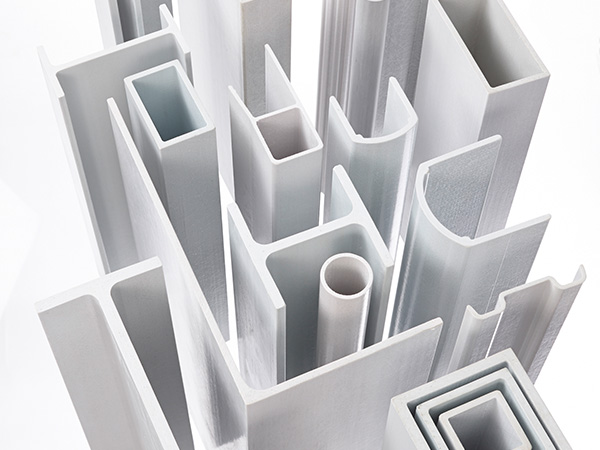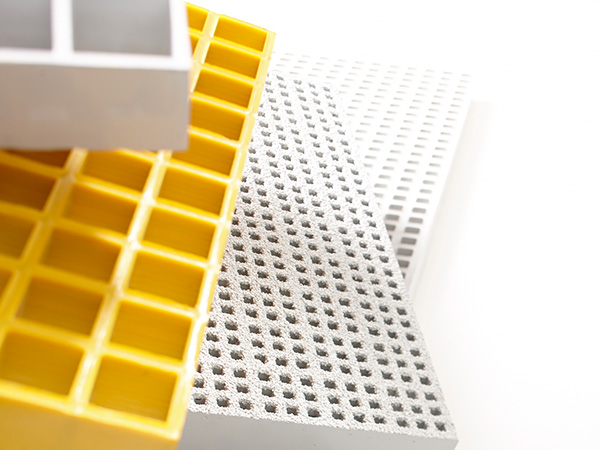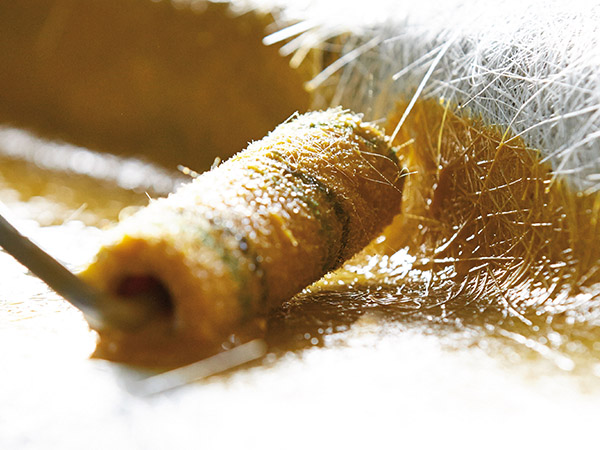Construction and special profiles
Pultrusion is a continuous production process for fibre-reinforced profiles. A distinction is made here between “open systems” and the injection process. The reinforcement materials are rovings, mats and fabrics, consisting of glass, Kevlar, carbon fibre or natural fibre, for example.
These are impregnated with resin, heated in a tool and moulded into the corresponding shapes. In its final form, the profile can then pass through the other production steps.
CTS has one of the largest product ranges of construction profiles. These are produced based on EN 13706 E23 and are monitored by independent testing institutes.


Grating systems
Grating systems are generally produced in special “moulds” through a wet lay-up process. The term “moulded gratings” is also used internationally. We produce these gratings with a square mesh. However, they can also be produced with a rectangular mesh for special applications.
Glass rovings are used as a reinforcement in several layers. Due to the high resin content, these grating systems offer very high chemical resistance. Molded gratings are available in a range of colours, including in a trans- lucent design. The surfaces are concave, gritted, smoothed or can be provided in a closed form with a cover plate. The construction design corresponds to DIN standards 24537-1 to 3.
For applications with large spans and high load, pultruded grating systems are available. These are produced from pultruded GRP profiles, bonded together and pinned.
Laminates
Manual lamination or fibre spraying are production options for moulding components in small and medium-sized series. The reinforcement material (mat/fabric) is laid in layers in a mould or laid directly on the surface to be coated. Then the reinforcement material of glass, carbon or Kevlar fibre in fabric or mat form is saturated with resin.
The manual lamination process is very low in cost, since large parts can be produced from low-cost moulds. This process is particularly suitable for prototypes, batches and individual production.
Fibre spraying is also known as “automated manual lamination.” Similarly to manual lamination, it is also carried out with moulds in which reactive resins and the cut fibres are applied by means of a resin fibre spraying system. Fibre spraying can be used when the quantity to be produced exceeds a batch, but the requirement for a production in the pressing process is still too small.

